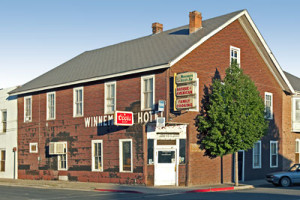Reading about historic preservation prompted me to think about how relevant the topic is in society today. This chapter brought to mind many different articles and news stories that have popped up recently within the last few years and serves as a reminder that this topic is deeply important. One such example is the Colosseum restoration project to clean the grime off the façade, that I saw on a 60 Minutes segment.
I agreed with many of the points brought up in the book, one of which is that by preserving different sites, we have the ability to go beyond static representation of artifacts and to present history as a complete environment (pg 18). Context is a major player within the world of preservation. I loved the discussion of Charleston’s implementation of historic district zoning ordinance policies in 1931 that made it illegal to build anything that would detract from the architectural and historical setting. We can see that those same policies have been adopted in many varied places.
I also agreed with the notion that the local level is where historic preservation is the most powerful. Communities are the driving force behind many efforts to protect historic sites and buildings. I love the idea that communities deem what is significant, but as with our discussion on museums, I worry about that in the long run. The pitfalls of relying on communities are in their failure to think long term and concerns about demographics, along with people in power. Talking of demographics, it makes me think of communities with a small percentage of ethnic diversity. The larger group could be gung-ho about preservation, but only so far as it applies to their own history, and not the sites of minorities. Addressing my other concern of longevity, I was reminded of efforts in my hometown of Winnemucca, NV to save a crumbling building. Last fall the Winnemucca Hotel was demolished and there was an outcry to save it. Built in 1863, the hotel was a noted Basque landmark as a boarding house and restaurant. It was left vacant for years to decay. Only when it was slated for demolition, did people pay attention to it. A group tried to raise money to buy the property and restore it, but their efforts fell short because they had no plan for the building after they bought the land. While the demolition is unfortunate, I think that had their efforts been successful, they would have started restoring the hotel, ran out of money, and the building would continue to sit without a purpose. Maybe I’m being cynical, but I fear that this scenario is an all too common one in other small towns that lack funding and sustained interest/effort in keeping these sites from deteriorating.
I’ll leave off with a few last thoughts. I think it’s important to note that these restoration and preservation projects can even add previously unknown information to our understanding, for instance, the fact that by cleaning cathedral façades people realized that they used to be brightly painted. This changes how people look at gothic architecture. I was also surprised at how short the list of Idaho Threatened Sites was. I expected a higher number in different places around the state rather than only 6 sites, 4 of which are in Boise.


While I was reading, I thought it would be interesting to see what sites from Idaho were listed as part of the National Historic Register. I never thought about looking at which sites are threatened. Great idea!